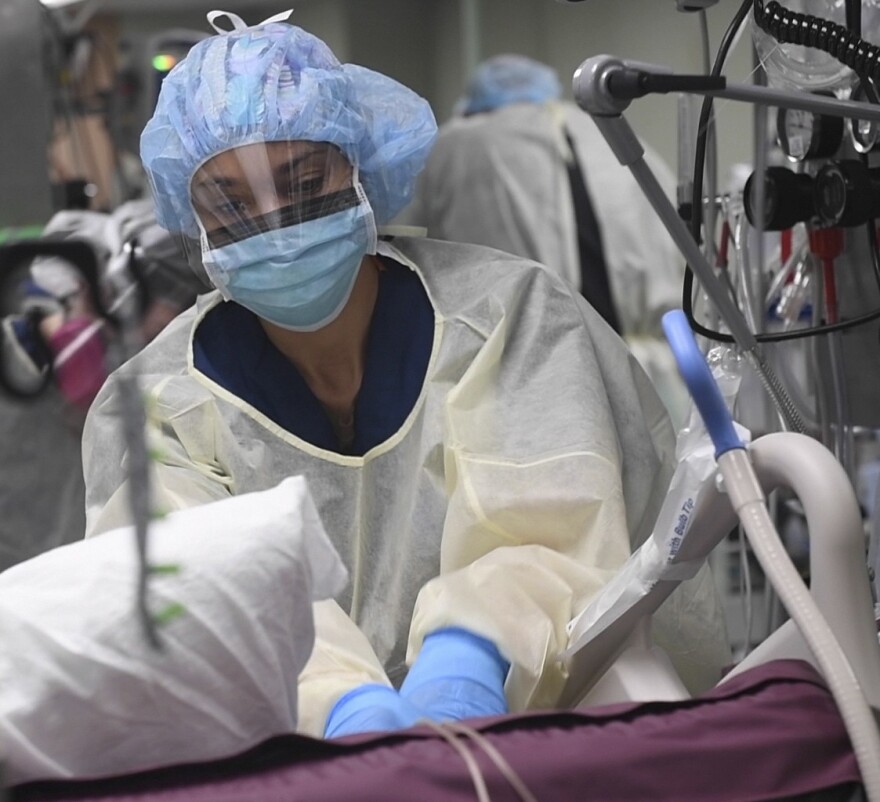Lubbock hospitals are treating more patients with COVID-19 complications than earlier in the pandemic.
Health authorities are not worried about running out of bed space quite yet. But as a medical hub for a large region, there is some concern.
“Whether they’re COVID, whether or not they're trauma or surgery, stroke, heart attack, whatever. It’s just a dynamic number," said Lubbock Health Authority Dr. Ron Cook. "I can’t put a finger on it, but I know that as those beds narrow, then that should make us all nervous.”
At a Thursday news conference, Cook said hospitals are seeing more than just coronavirus patients. Other medical needs still have to be cared for.
“We could easily overwhelm those numbers if we’re not careful," the physician said.
Coronavirus-related admissions have doubled in about a week and a half, with 94 patients in facilities Thursday, 41 in intensive care.
There is a similar trend across the state. Hospitalizations have steadily increased since the end of June, posting new high records for the past 11 days. Metro areas in particular have been overwhelmed and many have halted elective procedures. Cook said there are a few patients from the Permian Basin currently at Lubbock hospitals.
"We are a little isolated," said Chris Lancaster. "But I think what makes that unique is that we are that place for a lot of West Texas and certainly Eastern New Mexico. We are getting 50% or more from outside of Lubbock County.”
Lancaster, CEO of Covenant Medical Center, said if needed, the hospital has an eight-phase plan to expand capacity.
“We have about 80 ICU beds that we can make capable of taking care of patients and then another 100 beds outside of that," he said. "Now, that would mean some pretty drastic changes as far as elective cases and things that might normally take up some beds. That would change our operations. But our plan can take us up to that point.”
Dr. Mike Ragain, chief medical officer at University Medical Center, said his facility is also prepared for a patient surge.
"Our plan, because we have larger beds in our newer facilities, is to actually go to two patients in a room to be able to manage those," Ragain said. "That would really augment our capacity. That is how we’re able to ramp up so much.”
Cook said staffing is almost a bigger worry than space.
“Even though we have the staff that are capable of taking care of all of our hospitalized patients, some of those individuals are going to get sick, too," Cook said. "Which decreases the number of people that can take care of the hospitalized patients.”
Since March, 57 healthcare workers in Lubbock have contracted the virus.
Ragain says morale among caregivers remains steady at UMC, even as there is no real end to the pandemic in sight.
“We feel like we’re in a marathon, really, I think. It just keeps going," Ragain said. "We had hoped to be through this and on down the path.”
Health providers have learned a lot about caring for COVID-19 patients since the spring.
The current outbreak of COVID-19 has largely infected the 20-29 age group, though those ages are starting to vary as the virus spreads. Younger patients typically do not experience as severe of symptoms. That’s different than the first spike Lubbock saw, which was mostly isolated in nursing homes.
Dr. Prakash Shrestha, an infectious disease specialist for Covenant Health, said the population being hospitalized is still mostly older and often have existing health conditions. But, patients in their 40s have been admitted to the ICU.
There is still so much to learn about COVID-19, Shrestha said. But he thinks they now have more tools and better guidance to treat patients than they did a few months ago.
“I think we are in a better situation where we can manage our patients better," Shrestha said. "That’s one of the reasons why we see morbidity hasn’t go up as high as the numbers have.”
There is no cure for COVID-19. Cook said all doctors and nurses can do is respond to certain symptoms.
“We use different techniques to try to make that patient better. There is no cure. We have to try and let the body heal itself.”
Which is why the Lubbock Health Authority is asking everyone to do their part to slow the spread of coronavirus.





